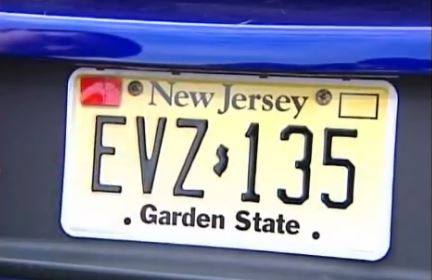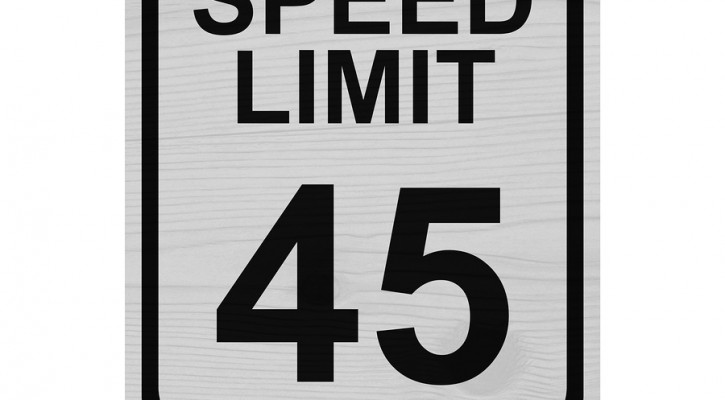Monthly Archives: November 2014

“ Swangin ” Stupid And Deadly
November 25, 2014
A new word was introduced into our vocabulary; “ swangin.” The term, first introduced by the hip hop artist Stalley on a 2013 album, means swerving from lane to lane as you drive down the road. While it may make for a good song, in practice, it’s dangerous, deadly and not at all smart.
Two days ago, an 18 year old driver who was swangin on a roadway in a business district of Houston,Texas lost control of his car, slammed into a fence and rolled over. His 15 year old female passenger, who wasn’t wearing a seat belt, was ejected from the vehicle and killed.
The problem with swangin is that, as the car swerves back and forth, the tires have less contact with the road. If the speed is high, there’s even less tire contact. Once the tires lose contact with the road, there’s no way to control the car.
No matter how good a driver you may think you are, if you’re swangin, there’s no way you can overcome the physics involved in keeping the car on the road. When you put these kinds of stresses on a car, you’re asking for trouble.
This isn’t the first time someone was killed as a result of swangin. Another Houston area teen lost his life as the result of a swangin crash in October.
Read more: ‘Swangin’ crash kills 15-year-old female passenger; driver charged

More Evidence Supports Later School Start Times
November 19, 2014
Another study has been published showing that later start times for high schools can reduce teen crashes. The study, conducted by the Eastern Virginia Medical School followed another, earlier study conducted in 2011 that looked at teen crash rates in two Virginia school districts with different high school start times.
The latest study looked at teen crash rates in Virginia’s Chesterfield and Henrico counties. After determining that there were no discernible differences in the adult crash rate between the two counties, the researchers compared the teen crash rates for the two counties. The researchers found that the crash rate for teens in Chesterfield county where school begins at 7:20 AM was significantly higher than the teen crash rate in Henrico county where school begins almost one and a half hours later at 8:45.
These findings agree with earlier, similar studies that led the American Academy of Pediatrics to issue a policy statement last August calling on school districts across the nation to adjust their high school start times no earlier than 8:30. According to the Academy statement, teen sleep rhythms naturally shift and it’s nearly impossible for teens to get to sleep earlier than 10:30 PM. Developing teens also need more sleep than adults. When schools start too early, it’s impossible for teens to get the needed amount of sleep leaving them fatigued and at risk when they drive. Other studies also point to a correlation between later start times and higher standardized test scores for teens.
All of the research points in the same direction. Later school start times for teens can save lives. School boards and administrators in districts where school starts earlier than 8:30 AM need to be made aware of this data and should be urged to move the start times to later in the morning.
For more information, read: Research reinforces link between increase in teen driver crashes and early high school start times

Ask The Driving School Instructor: Hand Over Hand Steering
November 16, 2014
Question: Do I need to use the hand over hand technique while making a left or right turn, some people say yes some no. Can I just keep both hands on steering wheel, I have a test coming up this week.
Answer: There’s nothing in the Florida driver’s handbook about using the hand over hand steering method. The manual only says that you should keep both hands on the wheel and maintain control of the vehicle while steering. As a former license examiner for Florida’s Division of Drivers Licenses, I can tell you that I didn’t make drivers use that method during the test; I only checked to see if both hands were on the wheel, that they were in control, and could steer the car in the right direction.
During the test, you should keep both hands at the 8 and 4 o’clock position on the wheel. When making left or right turns, the best method to use is the “push and pull” method. That means, if you’re making a right turn, pull the wheel with your right hand and push with your left. When straightening out, just relax your grip and let the wheel slide naturally back to the neutral position.
The proper placement of your hands and the push and pull method are best explained in the video below.
Good luck on your test.

Red Decals For Teen Drivers Reduce Crashes
November 12, 2014
Red decals used to identify teen probationary drivers in New Jersey have significantly reduced involvement in motor vehicle crashes according to a study conducted by the Children’s Hospital of Philadelphia (CHOP). In 2010, New Jersey enacted “Kyleigh’s Law,” an act that required all 16 to 20 year old drivers who hold a learner’s permit or intermediate license to display a red decal on the front and back license plates of any vehicle they drive.
New Jersey has some of the most comprehensive Graduated Driver License (GDL) laws in the nation and the intent of the act was to aid police in the enforcement of the GDL laws . While other industrialized nations have used some sort of identifying marks for teen drivers for quite some time, New Jersey was the first state in the US to implement such a law
In the first study on the law’s effect, CHOP compared teen crash statistics from the four years before the enactment of Kyleigh’s Law with crash statistics for the two years after. After eliminating factors such as gender, age, gas prices, month of the year, and crash trends among older drivers, CHOP determined that the presence of the red decals led to an overall reduction of 9.5 percent in the crash rate among teen drivers.
Even more significant was a reduction in the cash rate among older teens with a reduction of 13 percent per year for 18-year-olds and nearly 17 percent for 19-year-olds. In the years prior to enactment of the law, there was no significant reduction in crash rates for those two age groups.
According to the CHOP researchers, an estimated 3,197 fewer intermediate drivers were involved in motor vehicle crashes after enactment of the law.
The red decals not only aid law enforcement in identifying GDL license holders but the teen drivers themselves, with essentially a red target on their back, tend to drive more safely to avoid attention. If it leads to crash reduction rates like those identified in the study and saves lives, it’s worth it. Read more: New Jersey’s Teen Driver Decals Show Sustained Link with Fewer Crashes
Photo: www.state.nj.us

Ask The Driving School Instructor: Slow Driver
November 5, 2014
Question: I’m still getting used to driving and I tend to be a slow driver compared to the rest of the traffic, is that dangerous?
Answer: In a word, yes but it depends on how fast the rest of the traffic is going.
Young drivers are often taught that they should go with the flow of traffic and that’s generally good advice unless the majority of the traffic is driving faster than the speed limit. If everyone else is speeding, that doesn’t mean you also have permission to speed. Speeding takes away the time you need to react to a dangerous situation ahead and it increases the crash forces. Just because “everyone else is doing it” doesn’t mean you should do it too. And remember, even if everyone else is doing it, generally, a police officer can only stop one car at a time for a speeding ticket and you could easily be the one that he chooses to stop.
If the flow of traffic is moving at the speed limit and you’re driving slower than everyone else, it could be dangerous for several reasons;
- When driving slowly, other drivers who may not be paying full attention to the road ahead may expect you to be traveling at the normal speed and misjudge their following distance.
- Drivers stuck behind you can become frustrated leading them to take risky actions like tailgating or trying to pass you without enough clear space.
- Driver frustration can, in extreme cases, lead to road rage situations where another driver will try to harm you in some way as punishment for holding him/her back.
You should never speed but you should always try to drive at the speed limit if possible. Never drive in the left lane unless you’re passing a slower vehicle or preparing to turn left. Keep the left lane open for others to pass you.
If you’re driving on a country road with no passing lanes and traffic is building up behind you, pull off the road long enough for the faster traffic to pass. It’s the polite thing to do and it’ll keep you safer in the long run.
